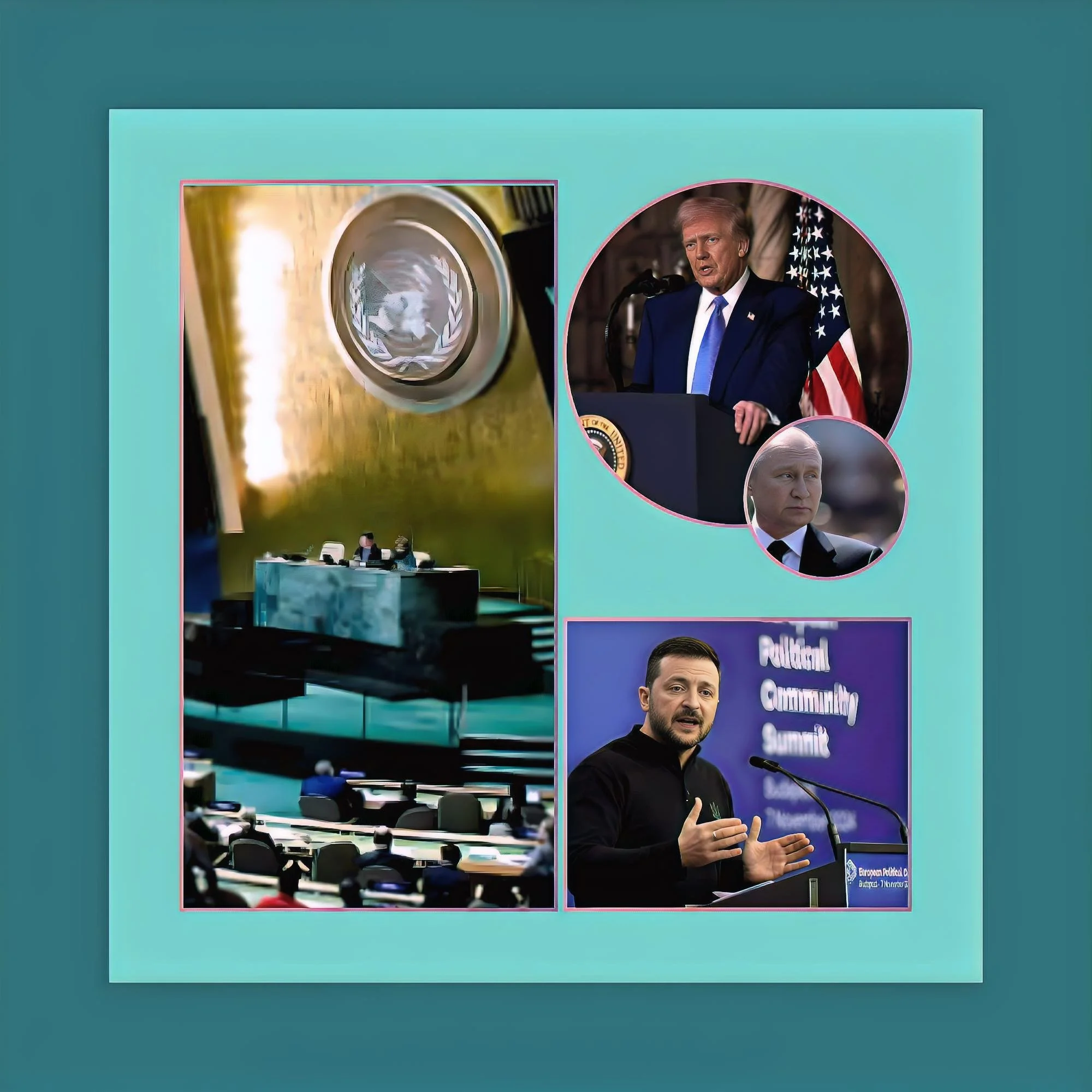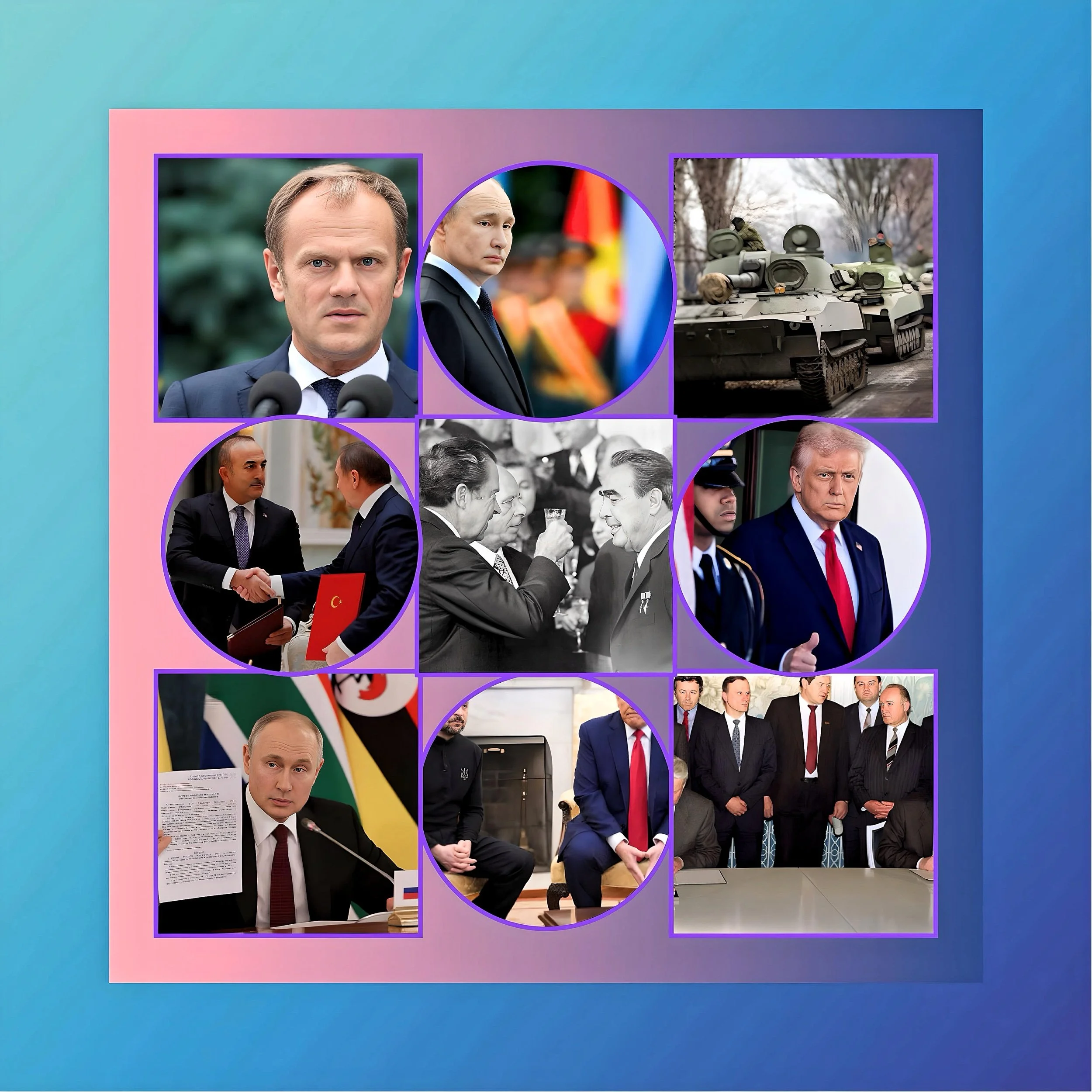Trump’s Strategic Calculus on Ukraine and Gaza: Risks, Agendas, and Global Repercussions
Introduction
The Trump administration’s approach to the Russia-Ukraine war and Israel-Palestine conflict reflects a blend of transactional nationalism, alignment with authoritarian regimes, and disregard for multilateral frameworks.
These policies carry profound risks for U.S. global standing, international stability, and the rules-based order.
Below, FAF analyzes Trump’s strategic priorities, potential hidden agendas, and the consequences for America and the world.
Russia-Ukraine War: Expediency Over Principle
Trump’s Push for a “Deal” with Putin
Trump has prioritized ending the Ukraine war through direct negotiations with Russia, sidelining Ukraine and European allies.
His administration’s approach includes
Excluding Ukraine from Talks
U.S.-Russia discussions in Riyadh and proposed Trump-Putin summits deliberately omitted Ukrainian representatives despite Kyiv’s sovereignty claims.
Secretary of State Marco Rubio framed these talks as a “first step,” but Ukrainian President Volodymyr Zelensky warned against “decisions between the U.S. and Russia about Ukraine.”
Concessions to Russia
Trump has echoed Kremlin demands for elections in Russian-occupied territories and suggested Ukraine abandon its NATO aspirations, effectively legitimizing Putin’s territorial conquests.
His administration also halted investigations into Russian election interference and disbanded an FBI task force on foreign influence operations.
Get minerals signed with no security guarantee
Trump wants to get the minerals deal signed with no security guarantees, which Ukraine and Europe oppose. This goes in favor of Russia, who can regroup and attack Ukraine again. There is also an underlying intent of removing Zelenskyy from Ukraine's Presidency and having a puppet government favoring US and Russia
Undermining European Security
By questioning NATO’s relevance and threatening to abandon collective defense,
Trump has emboldened Russia to test Western resolve through cyberattacks and territorial aggression.
Hidden Agenda
Trump’s focus on a swift resolution may stem from a desire to claim a foreign policy “win” ahead of the 2024 election, bolstering his image as a dealmaker.
However, this risks codifying Russian gains and destabilizing Eastern Europe.
Israel-Palestine Conflict: Rewarding Authoritarianism
The Gaza “Takeover” Proposal
Trump’s plan for the U.S. to “own” Gaza and transform it into a “Riviera of the Middle East” has drawn widespread condemnation
Displacement of Palestinians
The proposal implies mass expulsion of Gazans, with Israeli officials ordered to prepare evacuation plans. UN Secretary-General António Guterres warned this could constitute ethnic cleansing.
Undermining the Two-State Solution
By endorsing Netanyahu’s vision of indefinite Israeli control over Gaza, Trump has abandoned even rhetorical support for Palestinian statehood, aligning U.S. policy with far-right Israeli factions.
Legal and Moral Risks
Annexing Gaza would violate the Geneva Conventions, exposing U.S. personnel to International Criminal Court prosecution for war crimes.
Hidden Agenda
Trump’s plan serves Netanyahu’s political survival by legitimizing his hardline policies while appealing to evangelical voters domestically. It also distracts from stalled hostage negotiations and shifts blame onto Arab states for Gaza’s reconstruction.
Risks for the United States
Erosion of Global Leadership
Loss of Credibility
Trump’s abandonment of Ukraine and embrace of Putin have shattered trust among NATO allies. France and Germany now hedge against U.S. unpredictability, exploring independent defense initiatives.
Empowering Rivals
China has capitalized on the U.S. retreat from climate and trade leadership, while Russia exploits NATO fissures to expand its influence in Europe and the Middle East.
Institutional and Legal Vulnerabilities
War Crimes Liability
U.S. involvement in Gaza could subject military personnel and officials to ICC prosecution, setting a dangerous precedent for international accountability.
Domestic Polarization
Trump’s rhetoric framing critics as “disloyal” exacerbates political divisions, weakening bipartisan consensus on foreign policy.
Risks for the International Community
Collapse of Multilateral Frameworks
UN and NATO Weakened
Trump’s executive order reviewing all multilateral commitments threatens withdrawals from the UN Human Rights Council, UNESCO, and refugee conventions, eroding global governance.
Normalizing Authoritarianism
By legitimizing Putin and Netanyahu’s expansionism, Trump signals that territorial aggression and human rights abuses face no consequences, encouraging copycat actions by China (Taiwan) and others.
Humanitarian and Security Crises
Ukraine’s Fragility
A rushed peace deal could leave 20% of Ukraine under Russian occupation, creating a frozen conflict that destabilizes Europe and empowers separatist movements.
Gaza’s Radicalization
Forced displacement and U.S.-backed occupation risk fueling Hamas resurgence or the rise of more extreme factions, perpetuating cycles of violence.
Conclusion
A World Reordered by Transactionalism
Trump’s policies reflect a deliberate shift from principles-based leadership to transactional deals prioritizing short-term gains over long-term stability.
While his supporters frame this as “pragmatism,” the risks—diminished U.S. influence, empowered autocrats, and eroded international law—threaten to unravel the post-1945 order.
For America, the stakes include irreparable damage to alliances and a loss of moral authority. For the world, Trump’s agenda risks normalizing conflict, displacement, and authoritarianism as tools of statecraft.
Reversing this trajectory will require rebuilding trust through consistent diplomacy, reinvesting in multilateral institutions, and reaffirming commitments to universal rights—a daunting task in an increasingly fractured global landscape.






